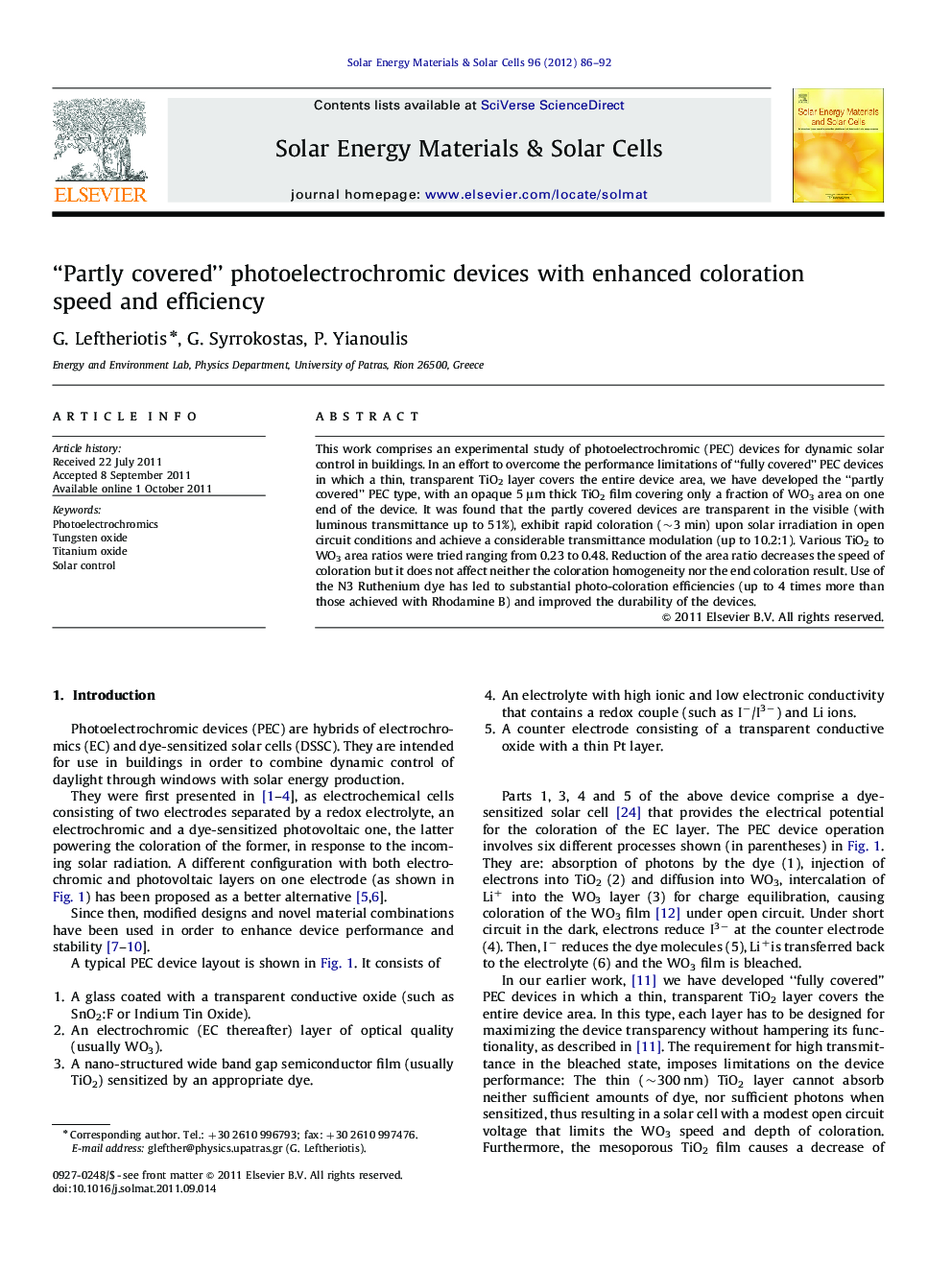| Article ID | Journal | Published Year | Pages | File Type |
|---|---|---|---|---|
| 79469 | Solar Energy Materials and Solar Cells | 2012 | 7 Pages |
This work comprises an experimental study of photoelectrochromic (PEC) devices for dynamic solar control in buildings. In an effort to overcome the performance limitations of “fully covered” PEC devices in which a thin, transparent TiO2 layer covers the entire device area, we have developed the “partly covered” PEC type, with an opaque 5 μm thick TiO2 film covering only a fraction of WO3 area on one end of the device. It was found that the partly covered devices are transparent in the visible (with luminous transmittance up to 51%), exhibit rapid coloration (∼3 min) upon solar irradiation in open circuit conditions and achieve a considerable transmittance modulation (up to 10.2:1). Various TiO2 to WO3 area ratios were tried ranging from 0.23 to 0.48. Reduction of the area ratio decreases the speed of coloration but it does not affect neither the coloration homogeneity nor the end coloration result. Use of the N3 Ruthenium dye has led to substantial photo-coloration efficiencies (up to 4 times more than those achieved with Rhodamine B) and improved the durability of the devices.
► “Partly covered” photoelectrochromic devices have been developed. ► They incorporate a thick TiO2 film that covers a fraction of the device area. ► They are transparent in the visible with luminous transmittance up to 51%. ► They exhibit rapid coloration (∼3 min) upon solar irradiation in open circuit. ► Their transmittance modulation is up to 10.2:1.
